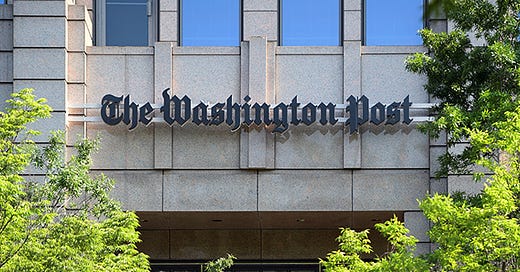Black Women Are Not Your Comparison Tools
The racist treatment of Washington Post video technician Breanna Muir illustrates a wider, systematic problem. Here is why it matters.
Breanna Muir is a video technician at the Washington Post. According to her workplace’s official bio, she has previously worked in video production for Voice of America, Monumental Sports and Entertainment, and the Washington Football Team. She is also fluent in French, having studied the language at Virginia Wesleyan University before obtaining her master’s at American University.
Breonna Taylor was an ER technician for the University of Louisville Health. Before, she was an EMT for the same health system. She should be an ER technician right now.
Two different black women with different backgrounds - that is if you’re not Post Director of Video Micah Gelman.
Gelman, who is white, wrote a long Twitter thread about his video team’s coverage of the Ukraine crisis. As he praised the individuals of his team, he credited a “Breanna Taylor.”
One a video producer, the other who died at the hands of police brutality.
It wasn’t until a white woman, Post national political reporter Felicia Sonmez - who also happens to be a good Twitter mutual of mine, called his error out when it was brought to general attention.



Gelman later apologized, but not before hiding Sonmez’s reply pointing his error out and public opprobrium.
When Sonmez tweeted Muir’s statement from LinkedIn, her replies were bombarded with racist abuse towards Muir.


Comments ranged from “Breanna sounds like a miserable human being” to a recurring theme of “canceling” someone over a “mistake.” Except, microaggressions like Gelman’s are not just mistakes; they point to a wider, systematic problem black women face in the workforce.
A Simple Explainer
My name is Emma. Here is a photo of little Emma, for reference:
As a kid, I was often called Samantha by mistake because I looked like the eponymous American Girl doll, pictured below:
See the difference? One comparison involves a popular doll marketed towards little girls, the other comparison involves a black woman who was killed by three white police officers.
It shouldn’t take Sherlock to figure this out.
Mainstream Use of Microaggressions
Microaggressions like Gelman’s range in many forms. One frequent microaggression - the same microaggression Gelman used - compares two black women to each other.
During the press tour for Spider-Man: Homecoming (2017) dir. Jon Watts, white reporters often mixed up two of the stars, Zendaya and Laura Harrier.
It should be obvious who is who:
Both women were stars before the movie’s success; Harrier appeared in several films and television series, while Zendaya was a Disney Channel star who gathered attention for pointing out a fashion correspondent’s racist criticism of her dreadlocks at the 2015 Oscars.
Nonetheless, white reporters still confused the two stars.
The Fuller Picture
Black women have to work twice as hard compared to white women. Specifically, they have to work 39 cents harder, per the National Women’s Law Center:
When Felicia Sonmez and I work hard, we are seen as ourselves. She is the respected political journalist and newsroom advocate; I’m the horror novelist and college student who tweets while running this Substack.
When Breanna Muir works hard, she is seen as a victim of police brutality. When Laura Harrier works hard, she’s seen as Zendaya and vice versa.
This is what makes Micah Gelman’s tweet wrong. Black women are not comparison tools. Your black employees are not comparison tools.
That should not be a controversial statement.







